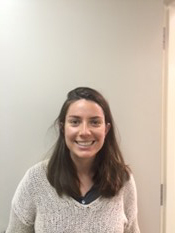Use of Deep Learning Segmentation and Biomechanical Models to Improve Dose Accumulation Accuracy in GI Structures
M McCulloch1*, G Cazoulat1, B Rigaud1, B Anderson1, E Kirimli1, S Gryshkevych2, S Svensson2, A Ohrt1, J Ohrt1, N Chopra1, R Mathew1, M Zaid1, D Elganainy1,3, P Balter1, E Koay1, K Brock1, (1) UT M.D. Anderson Cancer Center, Houston, TX, (2) RaySearch Laboratories AB, Stockholm, SE, (3) Dana-Farber Cancer Institute, Boston, MA
Presentations
TU-IePD-TRACK 3-6 (Tuesday, 7/27/2021) 3:00 PM - 3:30 PM [Eastern Time (GMT-4)]
Purpose: Dose accumulation in luminal gastrointestinal (GI) structures during radiotherapy (RT) for abdominal cancers can potentially improve toxicity prediction models. The purpose of this study is to assess the benefit of deep learning (AI) and biomechanical model-based deformable image registration (DIR) to improve DIR-based dose accumulation accuracy.
Methods: Dose accumulation was conducted on 75 patients with primary and metastatic liver cancer treated with external beam RT guided by daily CT-on-rails (CTOR), using a “Merged” DIR approach with biomechanical model-based DIR (FEM) inside the liver and intensity-based DIR outside. On a sub-cohort, FEM with boundary conditions on the liver and combined stomach and duodenum (GI_ROI) was applied (FEM+GI). The GI_ROI was auto-contoured on CTOR using a 3D UNet model trained on another 102-patient cohort. Contours were compared to physician-drawn contours on 8 CTOR, using Dice similarity coefficient (DSC), mean distance to agreement (DTA), Hausdorff distance (HD), and planned dose metrics. Intra-observer variability was evaluated. DSC was evaluated on the stomach and duodenum propagated after application of the Merged DIR approach. Accumulated doses based on Merged and FEM+GI were converted to EQD2 (α/β=3.5) and compared.
Results: Average(SD) DSC, DTA, and HD between AI and physician-drawn GI_ROI were 0.9(0.1), 0.2(0.1)cm, and 2.4(2.2)cm; intra-observer: 0.9(0.0), 0.1(0.0)cm, and 2.3(0.8)cm, p>0.1. Average D50(SD) and D1(SD) differences between AI and physician-drawn contours were 0.6(1.1)Gy and 0.5(0.2)Gy; intra-observer: 0.2(0.3)Gy and 0.3(0.3)Gy, p>0.1. Average(SD) DSC of the stomach and duodenum mapped via Merged were 0.8(0.1) and 0.55(0.2), respectively, compared to manual contours. Average(SD) accumulated D1 (EQD2) using Merged and FEM+GI were 26.2(13.8) and 25.6(13.7)Gy for stomach, and 20.3(18.0) and 19.6(18.1) for duodenum, respectively. These distributions were significantly different (p<0.05), with differences ranging 0.7-3.9Gy.
Conclusion: The use of AI-generated segmentation to drive biomechanical model-based DIR led to significant differences in the accumulated dose estimations which may improve toxicity prediction models.
Funding Support, Disclosures, and Conflict of Interest: National Cancer Institute of the National Institutes of Health under award number 1R01CA221971, RaySearch Laboratories AB, UT MD Anderson Cancer Center through a Co-Development and Collaboration Agreement. Kristy Brock receives funding from RaySearch Laboratories AB through a Co-Development and Collaboration Agreement and has a licensing agreement with RaySearch Laboratories AB.
ePosters
Keywords
Image-guided Therapy, Finite Element Analysis, Deformation
Taxonomy
IM/TH- Image Registration Techniques: Machine Learning
Contact Email



